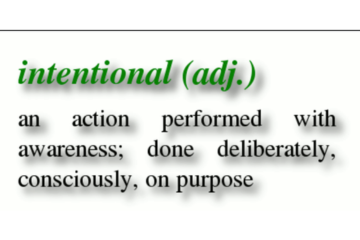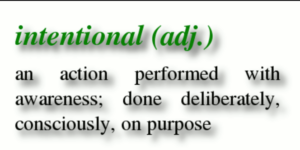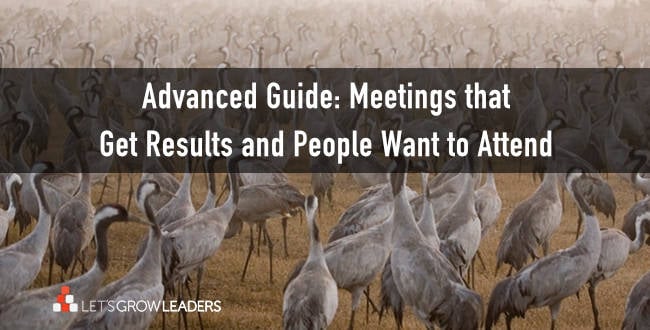
How much do you have today?
Building on the topic of change from two weeks ago, it strikes me how constant change is and yet, many things never change.
On April 17th, the Wall Street Journal did a “Journal Report on C-Suite Strategies”. The topic? “Thanks. Why it’s important to show gratitude at work – what’s the best way to do it” (tiered subscription)
Really? No matter how things change, gratitude never goes out of style. Is this topic worthy of big section in one of the nation’s leading news outlets? Apparently. One stat: there is a 15% increase in the time spent helping someone when they are appreciated, according to the author Sara Algoe.
Sara goes on to share research that showing “gratitude before a task, showed improved cardiovascular response”. When giving thanks, be specific and genuine, expressing your care and concern. Giving thanks correlates with helping colleagues feel valued, which brings me to the SCARF framework.
#WiseWords
“You don’t lead by hitting people over the head, that’s assault, not leadership.“
 As promised, from my last newsletter, here is Part 2 of How to WIN at Leading Change by Deb Graham. SCARF is such a GREAT framework, worth considering and implementing whether you are leading a change initiative or not. Read on:
As promised, from my last newsletter, here is Part 2 of How to WIN at Leading Change by Deb Graham. SCARF is such a GREAT framework, worth considering and implementing whether you are leading a change initiative or not. Read on:
Expecting pushback on an upcoming change? It’s normal to face resistance, as people naturally want to protect the status quo.
This reaction is not planned, but rather an emotional response to perceived threats. It’s important to understand how people might react to change, as it varies depending on the individual. One useful framework is the SCARF model, developed by Dr. David Rock and the Neuroleadership Institute, which identifies five common triggers:
Status: I am valuable
People want to feel valued and important. If Status is their trigger, they want to stand out from the crowd. Changes that negatively impact their title, office size, involvement in decisions, or perception of expertise can threaten their status.
Certainty: I know where I stand or what will happen to me
People want to know what’s going on and what to expect. Uncertainty around roles,
responsibilities, and the outcome of decisions can create anxiety. Change inevitably brings lots of uncertainty. Providing information such as the date the changes will be announced and what isn’t changing, can provide some stability and certainty.
Autonomy: I have a choice
People want to have control over their work. Micromanaging can threaten autonomy, while providing space and trust can increase it. Changes that limit autonomy may be met with resistance. If Autonomy is their dominant trigger, they will want to know whether the new way of doing things will give them more autonomy or less. Involving them will be critical to finding solutions that work for all involved.
Relatedness: I belong
People want to feel they belong and have supportive relationships. Changes that affect team composition or dynamics can create discomfort and resistance. Opportunities to get to know each other can help build trust. Also, leaders can use language such as “we” and “us” instead of “you,” “me,” and “they,” which signals a clear boundary between groups.
Fairness: I am treated fairly and others are treated fairly
People want to be treated fairly and perceive impartiality. Changes that seem unfair can trigger resistance. Lack of transparency implies you have something to hide, thus triggering the sense that things may not be fair.
Understanding these triggers and addressing them proactively can help reduce resistance. Providing clear communication, involving employees in decision-making, and promoting a sense of fairness can help create a smoother transition.
And Finally...
 Earlier this week, I coached a sales leader who is going through a tremendous amount of change at her company. We talked about the SCARF framework, and it really resonated with her. She felt both Status and Relatedness were fine but needed work on Certainty, Autonomy and Fairness.
Earlier this week, I coached a sales leader who is going through a tremendous amount of change at her company. We talked about the SCARF framework, and it really resonated with her. She felt both Status and Relatedness were fine but needed work on Certainty, Autonomy and Fairness.
For Certainty, she felt she could ask better questions, be more proactive and add dates. For Autonomy, she said she needed more clarity about what matters to her new managers. She thinks she knows… but realized during our session that she is following her instincts and is not really sure. Fairness was an issue too for a similar reason. She is managing her team based on what she thinks, she “knows better”.
What is the insight? When you are facing change in your organization (and we all know that change is constant), maybe try the SCARF framework to see if you are on track and managing your teams to sync up with the company’s new direction.
If you would like to learn more about how Deb and I can help your team leaders more effectively manage change, reach out.
Have a great week.
Mary Jo


 The type of environment where someone wants to work will matter differently to different people. One of my clients recently shared that he felt the company was too over the top focused on making sure everyone is “happy and engaged”. He said: “I just want to do the work but nobody seems to really focus on it. We are having far too many meetings on things other than the actual work.”
The type of environment where someone wants to work will matter differently to different people. One of my clients recently shared that he felt the company was too over the top focused on making sure everyone is “happy and engaged”. He said: “I just want to do the work but nobody seems to really focus on it. We are having far too many meetings on things other than the actual work.”
 In this month’s issue of Harvard Business Review, they featured an article
In this month’s issue of Harvard Business Review, they featured an article  What can you do with this information about busyness? If you have been reading my blog for a while you will know that one of my favorite words is “intentional”. How are you spending your time? What do you want more of? What do you want less of? What can you cut out?
What can you do with this information about busyness? If you have been reading my blog for a while you will know that one of my favorite words is “intentional”. How are you spending your time? What do you want more of? What do you want less of? What can you cut out?
 Back to the workshop. There are dozens of different tactics that you can use to create a motivating environment for your team such as flexible scheduling, asking for their opinions, giving them time off, or stretch assignments.
Back to the workshop. There are dozens of different tactics that you can use to create a motivating environment for your team such as flexible scheduling, asking for their opinions, giving them time off, or stretch assignments.
 To get more granular about the topic of leadership, this Forbes article offers some specific advice. Here are author Jennifer Cohen’s six tips:
To get more granular about the topic of leadership, this Forbes article offers some specific advice. Here are author Jennifer Cohen’s six tips: Today, I worked with a client who clearly demonstrated Inspirational Leadership as he was talking about how he would address a thorny issue with two of his department heads. Inspirational Leadership is one of the competencies of Emotional Intelligence (EI).
Today, I worked with a client who clearly demonstrated Inspirational Leadership as he was talking about how he would address a thorny issue with two of his department heads. Inspirational Leadership is one of the competencies of Emotional Intelligence (EI).
 From a career perspective, what is holding you back today? Could it be your inability to focus or are you so in the weeds that you no longer get excited about the bigger picture?
From a career perspective, what is holding you back today? Could it be your inability to focus or are you so in the weeds that you no longer get excited about the bigger picture?

 This blog post makes the point that people should want to attend meetings. When I read that, I rolled my eyes. For all my years in corporate, I rarely felt that way. But good, well-run meetings make things happen and drive progress forward, making people want to attend. Here are six tips from a post I saw on
This blog post makes the point that people should want to attend meetings. When I read that, I rolled my eyes. For all my years in corporate, I rarely felt that way. But good, well-run meetings make things happen and drive progress forward, making people want to attend. Here are six tips from a post I saw on 








